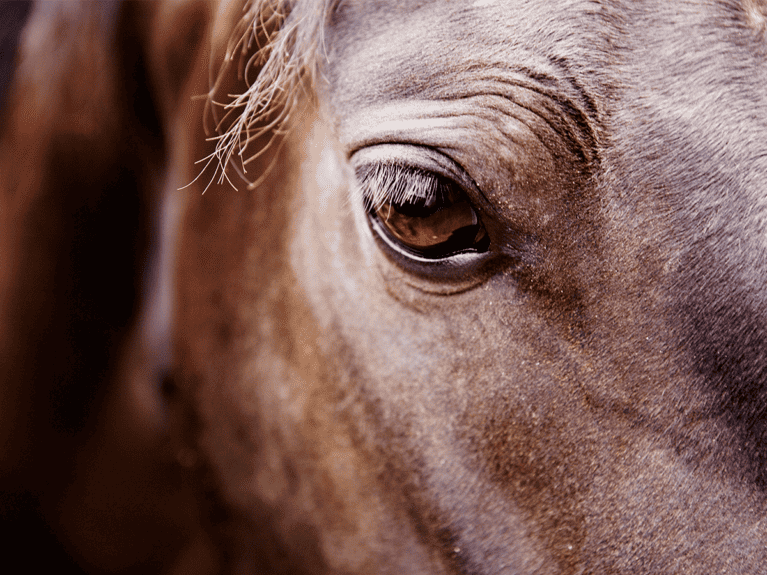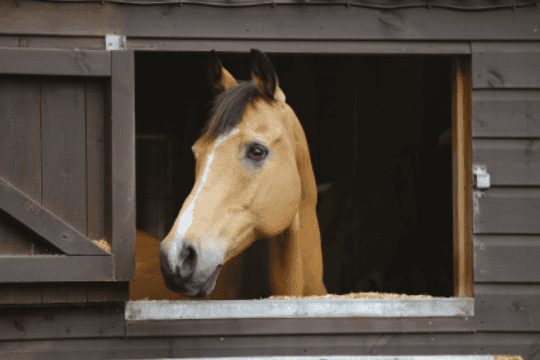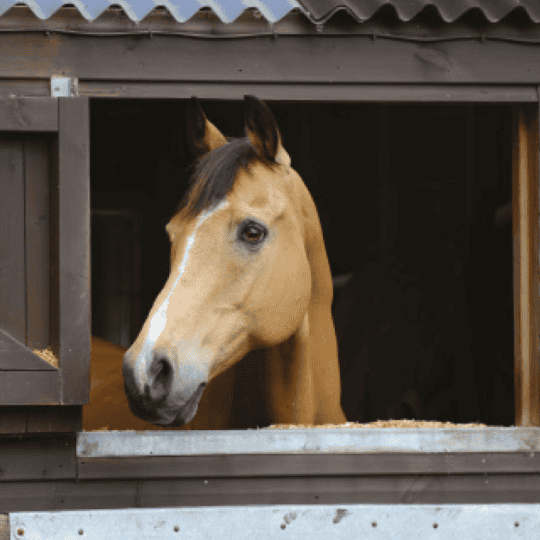Discover some fascinating facts about your horse’s eyes and understand his behaviour

Horses see the world differently from humans – and, of course, their type of vision is perfectly normal for them. In evolutionary terms, it means they’re well adapted visually to a roaming and grazing lifestyle and, as prey animals, can quickly spot danger and react to it. As a result, it’s useful to have some appreciation of this difference between the vision of horses and ours because it can help with training your horse and understanding his behaviour.
- Because horses have eyes on the side of the head, they have 350-degree vision, which is extremely useful for a prey animal. This means they have less clearly defined monocular vision (ie horses have two largely separate fields of vision) to the sides and clearer binocular vision in front of them. By moving their heads, horses can change their range of vision and, therefore, visual acuity.
- The blind spots in horses are immediately in front of the nose and immediately behind the tail, which is why they can be startled from behind.
- Horses’ eyes have evolved to process movements caught within their peripheral vision far more quickly than ours do, and this allows for an immediate reaction to potential danger. They’re also more aware of movement than they are stationary objects.
- All-round vision results in reduced depth perception via binocular vision and the area where there is good perception of depth is limited to straight ahead, which is why horses often raise their heads when approaching a jump.
- Blue eyes, also called wall eyes, are caused by lack of pigmentation within the iris, but in all other respects, they are anatomically and functionally the same as brown eyes.
- Horses have dichromatic vision, meaning they perceive two primary colours – blue and yellow. Humans are trichromatic, as we can see blue, yellow and red. This means horses see objects more easily when there’s contrast with the background colour.
- Horses have a third eyelid that offers extra protection to the eye and helps distribute essential moisture over the surface of the eyeball.
- Horses’ eyes don’t adjust as well as ours to changes in light. In fact, it can take around 20 minutes for them to adjust when moving from bright to dim light, such as when going from sunshine into a lorry.
- Despite the longer time needed to adjust, horses’ eyes are better adapted for seeing in reduced light and thanks to the tapetum lucidum at the back of the eye that reflects light, they can see well in the dark.
- Horses with reduced vision or cataracts often struggle more in low lighting than in bright light.
- Horses don’t see fine detail as well as we do and need to be closer to an object to see these details compared with humans.
- The peak age for good vision in horses is around seven. Prior to this, the eye is still developing, and, following it, vision starts to deteriorate just as it does in humans.
- The corpora nigra are black nodules around the margin of the pupil that help protect the eye from the glare of bright sunlight.
With thanks to Redwings Horse Sanctuary for their help with this feature, redwings.org.uk
Photo credit: Tyler Olson/shutterstock.com.













